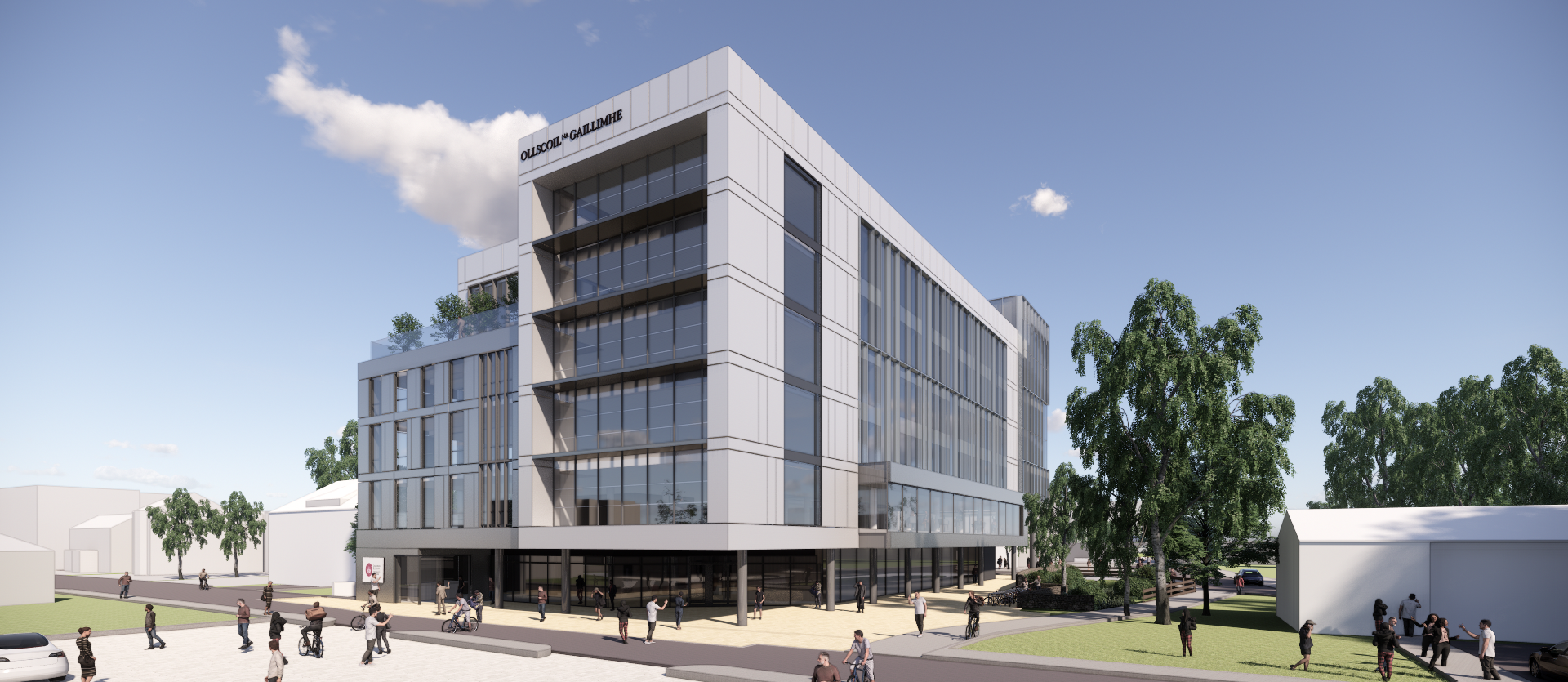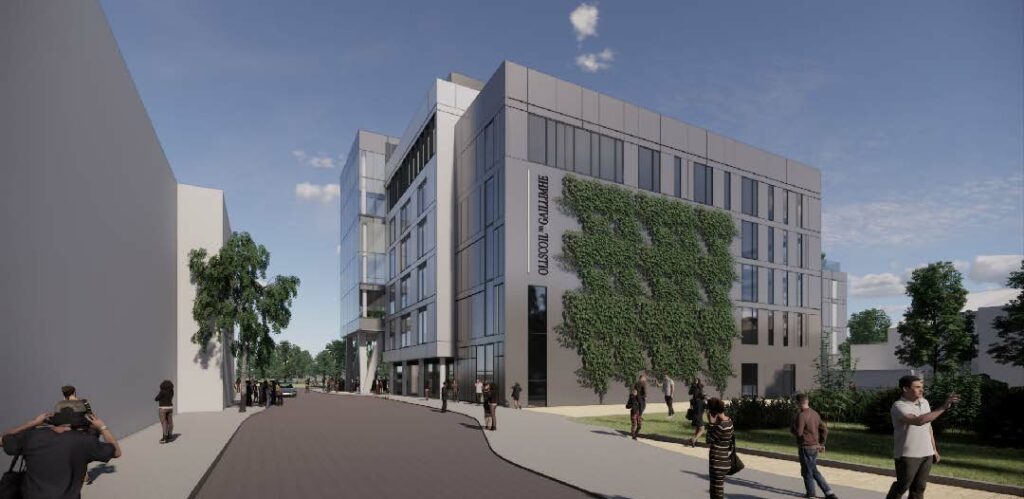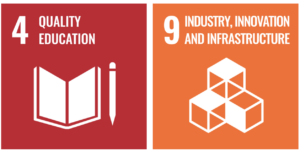
Monica Crump, Interim University Librarian explores this radically different library of the future, supporting collaboration, creativity and new forms of teaching, learning and engagement.
The doors of the James Hardiman Library first opened to students in November 1973. Fifty years later, the first signs of the greatly anticipated new Library and Learning Commons will soon be visible, when hoardings are erected in a riverside location on campus between Distillery Road and the Kingfisher Gym. Why the move away from the James Hardiman Library? And why a Learning Commons?
The James Hardiman Library was designed and built at a time when teaching and learning in Higher Education was dominated by the ‘chalk and talk’ method. Lecturers imparted information to their students in large lecture theatres and students listened, read the works of experts in their fields, absorbing information and building their knowledge. The outputs of scholarly publishing were available only in print format and a Library’s value was measured in terms of the number of volumes in its collections. These realities are reflected in the design of the James Hardiman Library with a large proportion of the building dedicated to bookshelves and collections. Study spaces placed around those bookshelves comprise large banks of desks, where students can silently read, reflect and learn.
While the ‘chalk and talk’ method still has a place within Higher Education and students certainly still need to read the works of the experts in their field, teaching and learning practice has become more collaborative, more interactive and more creative. Students are expected to work together on group projects, to take a problem-based approach to learning, to innovate and create solutions to real-world problems. Alternative assessment methods require students to produce a presentation, a podcast, a blog, a video or even a 3D-printed artefact. Students require appropriate spaces to work together and to create, activities that were not anticipated in traditional library design.
Scholarly publishing is now predominantly delivered online, and Library electronic collections significantly outweigh those in hard copy format. University of Galway Library collections, for example, comprise 520,000 hardcopy books, but nearly a million e-books. The Library makes 236,000 journal titles available to users, of which only 570 are received in print format. Libraries are no longer defined by their print holdings and the dedication of so much prime space to physical collections, whose use has dramatically decreased, while students struggle to find the spaces they need to study and collaborate, is no longer appropriate.
All of these changes have led to a vision of a new type of Library, that incorporates a Learning Commons. A Learning Commons is a space that enables collaboration, creation and social learning. It provides technology, tools and equipment, often in a Makerspace, as well as expert staff available to help. Furniture is often designed to be flexible and moveable, so that students can rearrange tables and seating according to their particular needs at a given time. In 2019, the University of Galway was granted HESIF (1) funding to build a Learning Commons and work has been ongoing with RKD Architects to bring that vision to life. Planning permission was granted in August 2023 and work will begin in early 2024 to clear the site, ready for construction to commence in 2025.
Our vision for the new University of Galway Library and Learning Commons is of an inspirational, welcoming, high-tech space of learning and creativity. It will be a space that brings diverse people and disciplines together, enabling interaction, discovery, innovation and new partnerships. It will be a vibrant scholarly and social space.

The ground-floor of the building will have entrances to the North and South and will comprise an open, collaborative Welcome Zone, linking the North and South campuses. This Welcome Zone will be open to the wider community and will include an exhibition area and event space, where a rolling programmes of exhibitions will showcase the research of the University as well as our archives and special collections. The Welcome Zone will include a helpdesk, a first port of call for queries on Library or IT matters. There will also be a Learning Success Hub, where expert help will be available to students on all aspects of their learning journey, for example academic writing, information seeking, citing and referencing.
The building will be fully accessible throughout, and specialist support and technologies will be available to students with disabilities through the Assistive Technology Centre. The Digital Scholarship Centre will provide support, technologies and collaborative opportunities for data analysis, visualisation, image processing and other digital scholarship techniques. The Makerspace will provide space, equipment and support for students to imagine, design and build, enabling 3D printing, electronics development, and audio or video production, including virtual reality.
Throughout the building, students will find collaborative spaces in the form of breakout soft seating areas, enclosed group study rooms or diner style booths, where they can meet, collaborate and discuss without fear of disturbing others. Of course, individual, quiet study spaces are still very important and the building is designed to become increasingly quiet as you move up through the floors. We will offer students a wide variety of study space style to reflect different learning preferences and different stages of their learning journey. For example, seats with views, maximising the riverside location, will be available for the reading or reflective phase of learning and enclosed carrel type seats will suit those at head-down write-up time.
As well as being a Learning Commons, the building is also a Library and therefore Collections remain a key component. We will continue to have some collections on open shelving, however, the proportion of our collections on open access will be significantly less than currently. The vast majority of our collections will be stored in a high-density, automated storage and retrieval system, what we are calling the Bookbot. The Bookbot will store books and journals in crates, which are tightly packed in a racking system and retrieved by an automated system. As soon as a user requests an item via the library catalogue, the Bookbot retrieves the relevant crate, library staff remove the requested item from the crate and make it available for the user to collect. These systems are hugely efficient in terms of the space they occupy and so enable us to maximise the space available for student spaces as outlined already. Our Archives and Special Collections will remain in their current home in the Hardiman Research Building. To ensure that we retain a strong link for all students to that cultural heritage, we will be building in ways to showcase our Archives and Special Collections throughout the building, as well as via the Exhibitions space.

Courtesy of Architects RKD.
Students spend long hours in the Library and therefore looking after their well-being is very important. The building will include a café, a relaxation space and a sensory space for a complete escape to calm for those with sensory issues. An outside terrace as well as external seating and a biodiversity garden at ground level will provide opportunities for students to connect with nature and get some fresh air.
The Library is the heart of any University campus and as our campus has developed towards the North, it is entirely fitting that the Library will move to the new centre, linking North and South Campuses, providing a central symbol of the scholarly endeavours of the University Community. Ní amháin Leabharlann a mbeidh ann ach Lárlann i gcroí-lár an champais.

Profiles

Monica Crump is Interim University Librarian, in which role she is responsible for leading the University of Galway Library team in the delivery of the Library Strategy: Preserving the Past, Enabling the Future. A particular focus of her work is the planning of a new Library Building, which will deliver a future-ready learning environment, supporting the University’s Academic Strategy - Teaching and Learning, by enabling students’ collaboration and creativity, supporting their learning success, as well as providing collections and spaces for individual, focussed study.
Monica has nearly 30 years’ experience working in higher education, as a librarian and a researcher. She has particular interests in the ever-evolving world of scholarly communications and publishing, as well as the alignment and development of teams to deliver institutional strategic goals and support evolving user needs.